Mohandas Gandhi The quiet Empire Builder
Mohandas Gandhi is often called Mahatma — the Hindu term for “great soul”
Not all revolutions were won by men with tanks. Like the women behind the pill, others used ingenuity and moral force. It’s been said that, in 1930, three people had achieved instant global recognition; Charlie Chaplin, Adolf Hitler and a skinny fellow who dressed to impress Mohandas Gandhi.
The British liked to think that, in India, they were the good imperialists.. parents, really. But after famines and repression, many Indians didn’t see it that way.
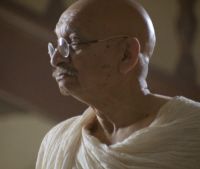
In March 1930, Gandhi, leader of the Indian Independence Movement, sent a letter to the headquarters of the British Raj in New Delhi.
It was a direct challenge posted through the front door.
The letter was addressed to Edward Frederick Lindley Wood, the Lord Irwin, Viceroy and Governor General of India, the jewel in the crown of the British Empire. Gandhi explained politely but firmly that he was intending to start a campaign of civil disobedience through which he would win India’s independence.
“I do not seek to harm your people. My ambition is no less than to convert the British through non-violence and thus make them see the wrong they have done to India.”
Gandhi finished his letter by promising to call off his planned campaign, if the British would agree to talks about freedom for India.
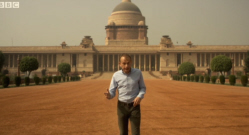
In the 1920s, on the surface, the British Empire seemed as self-confident as ever. Some sense of its swagger is given by the Viceroy’s new house in Delhi. The British architect working on a Mogul scale. It makes Buckingham Palace seem poky. But this was confronted by the determination of the wily little man from Gujarat, who understood that the British weakness was a determination to be thought decent rulers. So, his campaign of non-violent disobedience was a kind of political torture. Gandhi said, “there are many causes I’m prepared to die for but none that I am prepared to kill for.”
The Viceroy chose not to answer Gandhi’s letter, so the troublemaker embarked on his campaign of polite, smiling civil disobedience. Gandhi set out to walk the 240 miles from his home to the coast in a protest about salt. Along the way, the crowds welcoming him grew day by day.
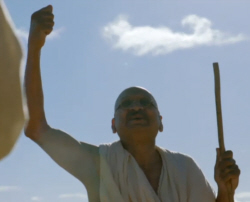
When he arrived at the seashore, 50,000 supporters, news men among them, were waiting to greet him. Gandhi walked down to the water’s edge and he scooped up some salty mud.
Mohandas Gandhi “With this handful of salt, I am shaking the foundations of the British Empire.”
Focusing on salt was a stroke of genius any spin doctor would envy. Indian salt production was a British monopoly and it was taxed. Gandhi encouraged all Indians to break the law by panning their own salt and refusing to pay the salt tax.
It was an echo of the Boston Tea Party.
Gandhi was engaged in a propaganda campaign and refusing to pay tax on salt would remind the Americans of their refusal to pay tax on tea when they broke away from the British Empire.
So, by collecting the salt and refusing to pay tax on it, Gandhi was challenging the British to make themselves look both brutal and ridiculous.
As mass protests rippled across India, the British authorities decided to arrest Gandhi and thrown him into jail. Perfect! Just what he wanted.
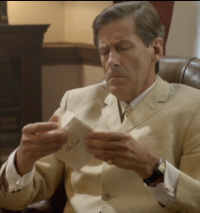
His arrest spurred even more people to come onto the streets. Demonstrations were ruthlessly put down. Britain was humiliated and condemned around the world. By the end of 1930, 60,000 peaceful protesters had been imprisoned. The agonised Viceroy gave in. He had Gandhi released from prison and invited him in for talks.
This meeting was the turning point. They agreed a pact which would lead, in stages, to India’s independence. As the two men celebrated with a cup of tea, Gandhi had one final surprise.
Gandhi “I am putting some salt into my tea to remind us of the historic Boston Tea Party.”
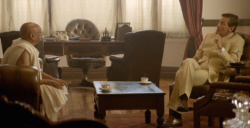
But in Britain, not everybody was impressed. Back in London, Winston Churchill was appalled to see Gandhi posing as a fakir, striding half-naked up the steps of the viceregal palace, to parlay on equal terms with the representative of the King Emperor. This is just the beginning. It took 16 years and a world war, but already the greatest empire the world had ever seen was lying, rather grandly, on its deathbed.
But in an age of so much political horror and failure, Gandhi’s legacy reached further than independence for India. His philosophy of non-violent resistance had been an inspiration all around the world.
Gandhi “Non-violence is the greatest force at the disposal of mankind. It is mightier than the mightiest weapons of destruction devised by the ingenuity of man. Non-violence is a weapon for the brave.”
